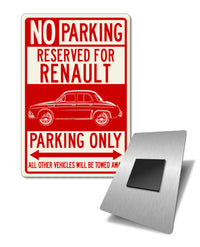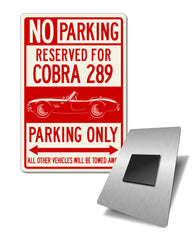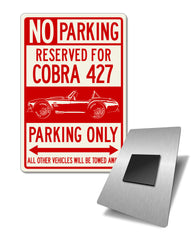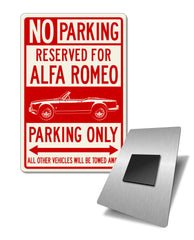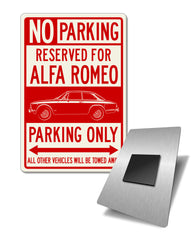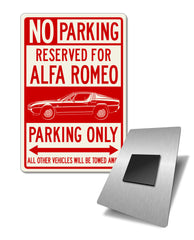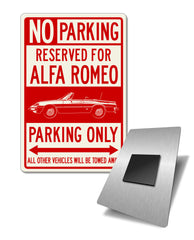

Renault Dauphine Ondine Kilowatt Reserved Parking Fridge Magnet
Renault Dauphine Ondine Kilowatt 1956 - 1967 Aluminum Parking Fridge Magnet
Renault first officially revealed the model's existence to the press in1955, and introduced to the public in March 1956 two days before its official introduction at the 1956 Salon International de l'Auto in Geneva. The Renault Dauphine is a rear-engined economy car available in a single body style — a three-box, four-door sedan. With over two million units sold worldwide during its production run from 1956 until 1967, the Dauphine was a great success and was built under licensing in several countries over the world: Argentina, Bazil, Israel, Italy, New Zeland, Japan, Spain and in the US were the Dauphine was the base vehicle for the electric Henney Kilowatt.
Perfect for all car enthusiasts that want to show their passion for their Renault Dauphine Ondine Kilowatt. Make room on the fridge and make it clear: Your Renault Dauphine Ondine Kilowatt deserves a reserved parking spot in the middle of the other magnets. The magnet is 2” x 3” (77 x 51 mm) and is quality made of .045” Aluminum that will not fade or break. It has rounded corner and a 1/2 inch square magnet in the back. Stick it to anything you'll like, on your fridge, workbench, toolbox, or man cave board. The colors are brights, vibrants and contrast beautifully. For any car guy, this is the ideal gift to add style and show their pride, even in the middle of the kitchen.
Available in: One color style only
- Made of 0.045” (1.14 mm) Durable Aluminum Material
- Size 3" x 2" (76.2 mm x 50.8 mm)
- Water-resistant & easy to clean
- 1” backer magnet for adhesion
This product is made in the USA
*Renault or any other marks are registered trademarks. Our products are not approved by any of these manufacturers and trademarks. We do not imply any association with these manufacturers and references are based on historical information in the public domain.

